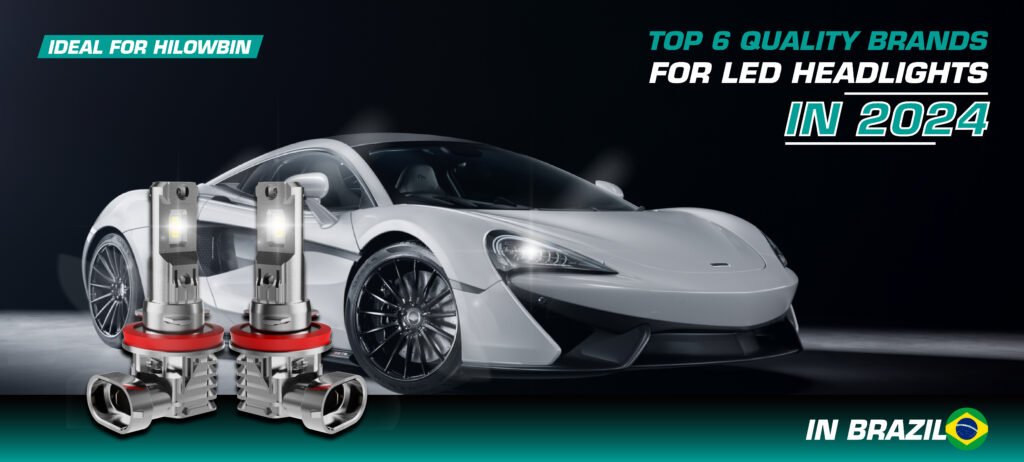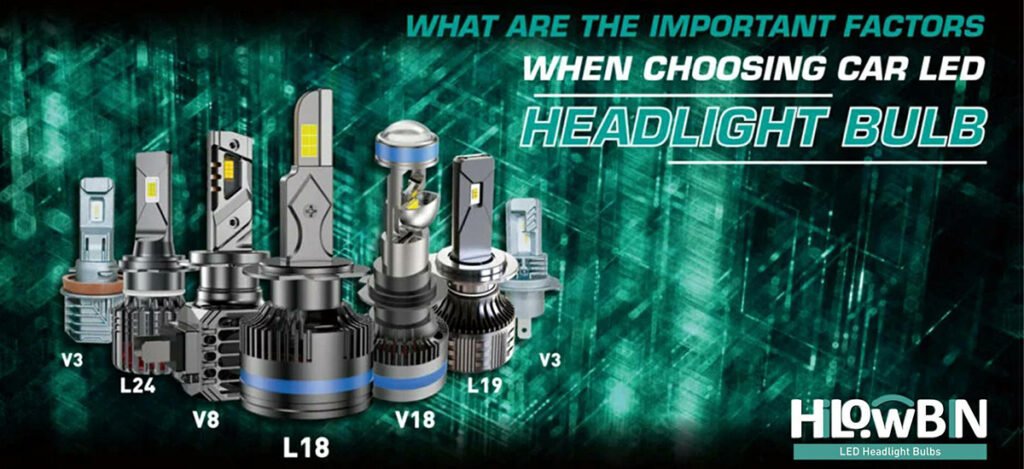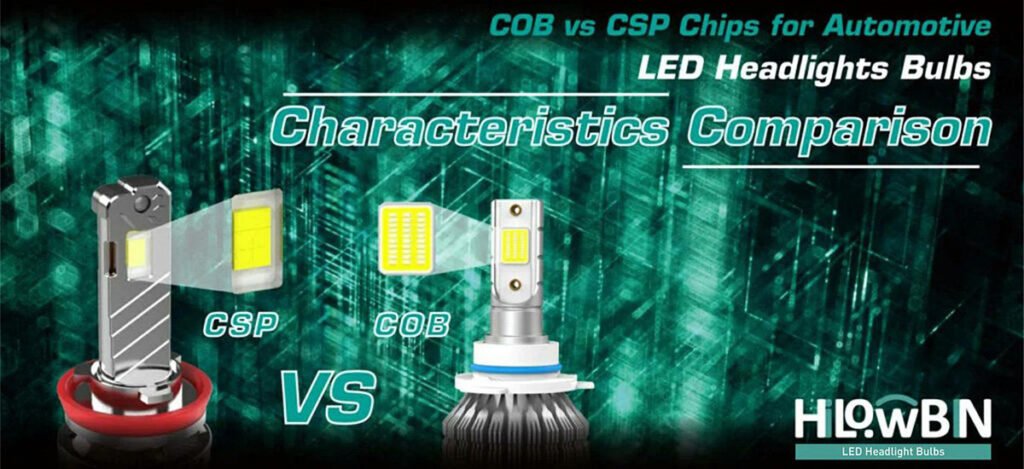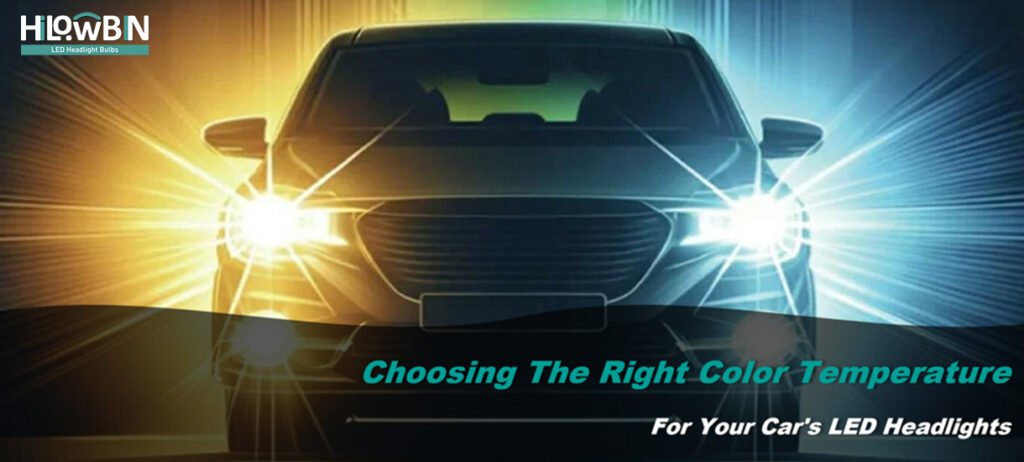With the continuous advancement of automotive technology, LED headlight bulbs, including low beam headlights, are becoming increasingly popular. Traditional halogen low beams and high beams, known for their low cost and easy maintenance, are now being replaced by more efficient and environmentally friendly LED alternatives.
LED headlight bulbs, especially low beam headlights, offer higher brightness, longer lifespan, and better energy efficiency, making them the preferred choice in modern vehicles. Understanding the differences between LED headlight bulbs, low beam headlights, and high beams is crucial for selecting the optimal lighting solution to achieve the best driving safety and performance.
Low Beams

Low beams serve as the most commonly used lights in daily driving, often referred to as the “big eyes” of the car. They illuminate the road ahead by directing the beam downward, which effectively lights the road without blinding oncoming drivers. Drivers typically use low beams on city roads or when other vehicles approach. While their light coverage is short, it ensures clear visibility of the road within a few meters ahead.
Irradiation distance:
The irradiation distance of the near-light lamp is usually between 30 and 80 meters, suitable for low and medium speed driving.
Light orientation:
The light should be directed towards the ground to avoid direct exposure to the driver coming from the opposite car.
Light intensity:
Light intensity is moderate, enough to illuminate the road ahead, but not cause glare.
High Beams

The high beam is the car’s “searchlight”, used when it is necessary to see further in the dark. The beam of the high beam is direct forward, providing a farther, brighter illumination. This design is suitable for use on rural roads or highways with few people and fewer vehicles, ensuring that the driver can spot distant obstacles and hazards in advance.
Irradiation distance:
The irradiation distance of the high beam can reach 100 meters or even farther, suitable for high-speed driving.
Light orientation:
Direct light in front, wide coverage, high brightness.
Light intensity:
High light intensity can provide a clear view in dark environments, but may cause blinding to drivers coming from the opposite side.
Use low and high beams correctly
During the driving process, choose the right lighting mode according to the surrounding environment and road conditions.
Use of low beams:
City Driving: When driving in urban areas, the presence of numerous streetlights and vehicle lights means that low beams are usually sufficient. Low beams provide adequate illumination without being too bright, thus avoiding disruption to other drivers.

Oncoming Traffic: When you see an oncoming vehicle, switch to low beams to prevent blinding the other driver, ensuring safety for both vehicles.

Following Other Vehicles: When trailing another vehicle, use low beams. High beams can reflect in the rearview mirror of the car ahead, causing discomfort or temporary blindness to the driver.
Use of high beams:
Country Roads and Highways: On unlit country roads or highways, high beams are ideal. They offer extended visibility, allowing you to detect obstacles, pedestrians, or other vehicles from a greater distance, thereby enhancing driving safety.
Safety Tips:
- Regularly Check Lights: Ensure both your low beams and high beams are functioning correctly. Regular maintenance of your lighting system is crucial.
- Know and Follow Traffic Regulations: Different regions have varied rules regarding headlight use.
- Do not abuse the use of high beam lights: the use of high beam lights in the occasion that is not suitable for use will not only cause trouble to other drivers, but also may lead to traffic accidents.
Best LED headlight bulb for low beam!
HILOWBIN V4 LED Light Bulb
King of cost performance

HILOWBIN V4 series LED headlights stand out in the market for their superior brightness and durability. The headlights provide ultra-high brightness of up to 5,000 lumens, making night driving clearer and safer. Their fanless design, combined with a precision aluminum housing, ensures efficient heat dissipation without noise and a service life of up to 50,000 hours.

The V4 LED headlight features a 1:1 plug-and-play design, eliminating the need for rewiring and complex installation, greatly facilitating use for the owner.
Drivers will find the V4 headlights especially suitable for use as low beams. These headlights provide a stable, uniform beam that doesn’t dazzle oncoming drivers, enhancing safety. Furthermore, drivers benefit from improved night driving safety.
Overall, the V4 LED headlights offer a reliable and easy-to-install lighting solution, making them an excellent choice for any driver.
Best LED headlight bulb for hing beam!
HILOWBIN Brightest L19 Series LED Headlight
Conversion Kit 140W 16800LM (2 bulbs)

HILOWBIN L19 Series LED headlight bulbs are ideal for drivers seeking a clear, perfect beam. These bulbs are equipped with a 3575 large-size chip, providing 140W and 16,800 lumens of ultra-high brightness and a 6000K color temperature. As a result, you can see more clearly and further when driving at night. No matter how dark the road is, L19 LED light bulbs ensure peace of mind, significantly improving the safety and confidence of night driving. Ultimately, they elevate your driving experience to the next level.
Many people worry about the L19 series headlight bulb’s high power and heat dissipation performance. The answer is no need to worry. The L19 series headlight bulb features two copper heat pipes, a 6063 aluminum housing, and a 12000RPM high-speed silent fan, ensuring efficient heat dissipation.
FAQs
Q1:Do high beam and low beam use the same bulb?
A1:Whether the same bulb can be used for low light and high light mainly depends on the specific design of the vehicle and the manufacturer’s regulations.
Q2:What is the difference in energy consumption between low beams and high beams?
A2:Low beams typically use less energy than high beams. This is because high beams are designed to deliver maximum illumination over a greater distance, necessitating more power. Additionally, the energy consumption difference can vary depending on the type and model of the headlight bulb.
Q3:How long will it take to replace the low and high beams?
A3:The lifespan of headlight bulbs varies by type. Traditional halogen bulbs last between 500 to 1,000 hours. LED bulbs can last up to 30,000 hours or more. Check your vehicle’s owner’s manual for specific replacement intervals. Regularly inspect your headlights for signs of dimming or malfunction.






